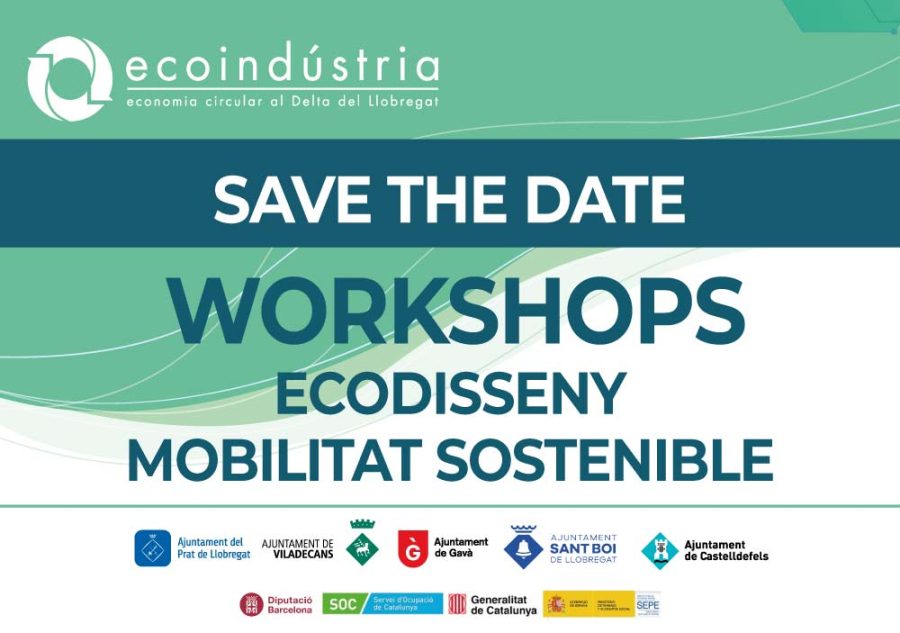This post and the image are taken from the website of the Foundation for the circular economy
"A Europe that uses resources effectively" it is one of the seven emblematic initiatives that form part of the Europe 2020 strategy that aims to generate intelligent, sustainable and inclusive growth. It is currently the Europe's main strategy to generate growth and employment, with the support of the European Parliament and the European Council.
This emblematic initiative aims to create a political framework intended to support the change to an efficient economy in the use of resources and low carbon emission that helps us to:
– improve economic results while reducing the use of resources;
– identify and create new opportunities for economic growth and promote innovation and EU competitiveness;
– guarantee the security of the supply of essential resources;
– fight against climate change and limit the environmental impacts of the use of resources.
This emblematic initiative offers a framework of long-term measures and, consistently, other medium-term measures, among which a strategy has already been identified aimed at turning the EU into a "circular economy" based on a recycling society in order to reduce the production of waste and use them as resources.
The circular economy is a economic concept which is interrelated with sustainability, and whose objective is that the value of products, materials and resources (water, energy,...) is maintained in the economy for as long as possible, and that the generation of waste It is about implementing a new economy, circular - not linear -, based on the principle of "closing the life cycle" of products, services, waste, materials, water and energy.
- Aspects of the circular economy
The circular economy is the intersection of environmental and economic aspects.
The linear system of our economy (extraction, manufacture, use and disposal) has reached its limits. We are beginning to glimpse, in effect, the depletion of a series of natural resources and fossil fuels. Therefore, the circular economy proposes a new model of society that uses and optimizes them stocks and the flows of materials, energy and waste and their objective is the efficiency of the use of resources.
The circular economy generates employment. The waste management sector in Spain represents thousands of jobs.
In a context of scarcity and fluctuating costs of raw materials, the circular economy contributes to the security of supply and the reindustrialization of the national territory.
Some people's waste becomes resources for others. The product must be designed to be deconstructed. The circular economy manages to turn our waste into raw materials, a paradigm of a future system. Finally, this system is a system that generates local employment and cannot be relocated.
- Operation of the circulating economyr
The circular economy rests on several principles:
– The eco-conception: considers the environmental impacts throughout the life cycle of a product and integrates them from its conception.
- The industrial and territorial ecology: establishment of a mode of industrial organization in the same territory characterized by an optimized management of them stocks and the flows of materials, energy and services.
- The economy of "functionality": privileging use over possession, the sale of a service over a good.
- The second use: reintroduce into the economic circuit those products that no longer correspond to the initial needs of consumers.
- The reuse: reuse certain residues or certain parts of them, which still can function for the elaboration of new products.
- The repair: finding a second life for damaged products.
- Recycling: taking advantage of materials found in waste.
- The valorization: use energy from waste that cannot be recycled.
- Actors of the circular economy
The circular economy is aimed both at the public actors responsible for sustainable development and the territory, as well as at companies that seek economic, social and environmental results, as well as at society that must question itself about its real needs.
- benefits of the circular economy
The development of the circular economy should help reduce the use of resources, reduce waste production and limit energy consumption. It must also participate in the productive reorientation of the countries. Indeed, in addition to the environmental benefits, this emerging activity creates wealth and employment (including those in the field of the social economy) throughout the territory and its development should allow it to obtain a competitive advantage in the context of globalization.
In 2014, the then European Commissioner for the Environment, Janez Potocnik, during the 3rd International Forum on Economy - Resource Efficiency, pointed out that "it is necessary to transform Europe into a resource-efficient economy, although efficiency alone is not enough. We also have to make sure that once we have used our products, our food and our property, we select the materials from these and use them again and again. Every year, in Europe, an average of 16 tons of materials are used per person to move our economy. And in addition, around 6 tons per person become waste. On the other hand, almost half of the waste generated ends up in landfills.
An integral part of the EU's approach to resource efficiency must be to move away from the linear economy - where materials are extracted from the earth to make products, use them and then dispose of them - towards a circular economy - where waste and by-products, from the end of life of used products, enter the production cycle again as secondary raw materials. In short, the use of waste as the main source of reliable raw material is essential for the European Union.
There is a strong economic and business motivation in favor of the circular economy and resource efficiency. In fact, The European Commission, as a collegiate body, has adopted resource efficiency as a central pillar of its structural economic strategy Europe 2020».
Because waste is only one stage in the life cycle of products, the Commission will include its proposals on waste in a much broader package on resource efficiency and the circular economy.







